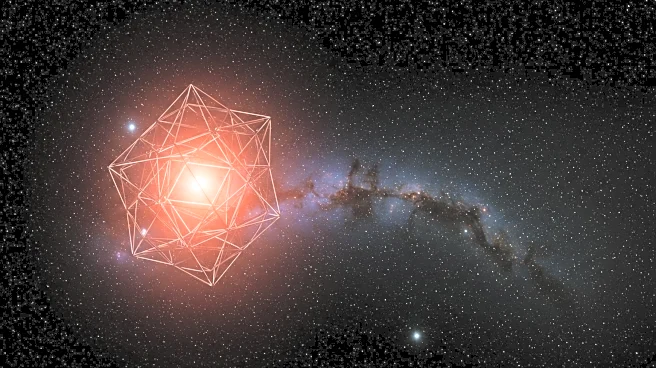What's Happening?
Mathematicians Claudia Fevola and Anna-Laura Sattelberger have published research exploring positive geometry, a novel mathematical framework that may unify particle physics and cosmology. This interdisciplinary study, detailed in the Notices of the American Mathematical Society, investigates how algebraic structures and geometric shapes can describe phenomena from particle collisions to the universe's architecture. Positive geometry offers a complementary perspective to traditional quantum field theory, providing a geometric framework for particle interactions. The research connects mathematical tools like algebraic geometry and combinatorics to decode fundamental structures in physics.
Why It's Important?
The study of positive geometry could revolutionize the understanding of physical phenomena by offering a unified language for theoretical physics. This approach has implications for both particle physics and cosmology, potentially simplifying computations of scattering amplitudes and reconstructing the laws governing the universe's birth. The research highlights the close relationship between mathematics and physics, where advancements in one field drive progress in the other. Positive geometry may lead to new insights into the universe's earliest states and the behavior of elementary particles, impacting scientific theories and models.
Beyond the Headlines
Positive geometry represents a shift in how scientists approach complex physical systems, using geometric frameworks to encode information transfer between systems. This method mirrors human understanding of abstract concepts, potentially influencing future research in both mathematics and physics. The study's interdisciplinary nature encourages collaboration across fields, fostering innovation and discovery. As positive geometry evolves, it may redefine fundamental research, offering new perspectives on the universe's structure and the interactions within it.











